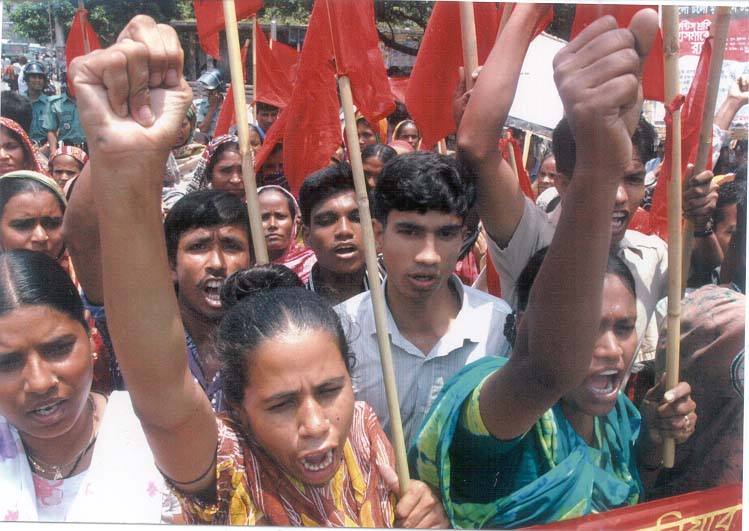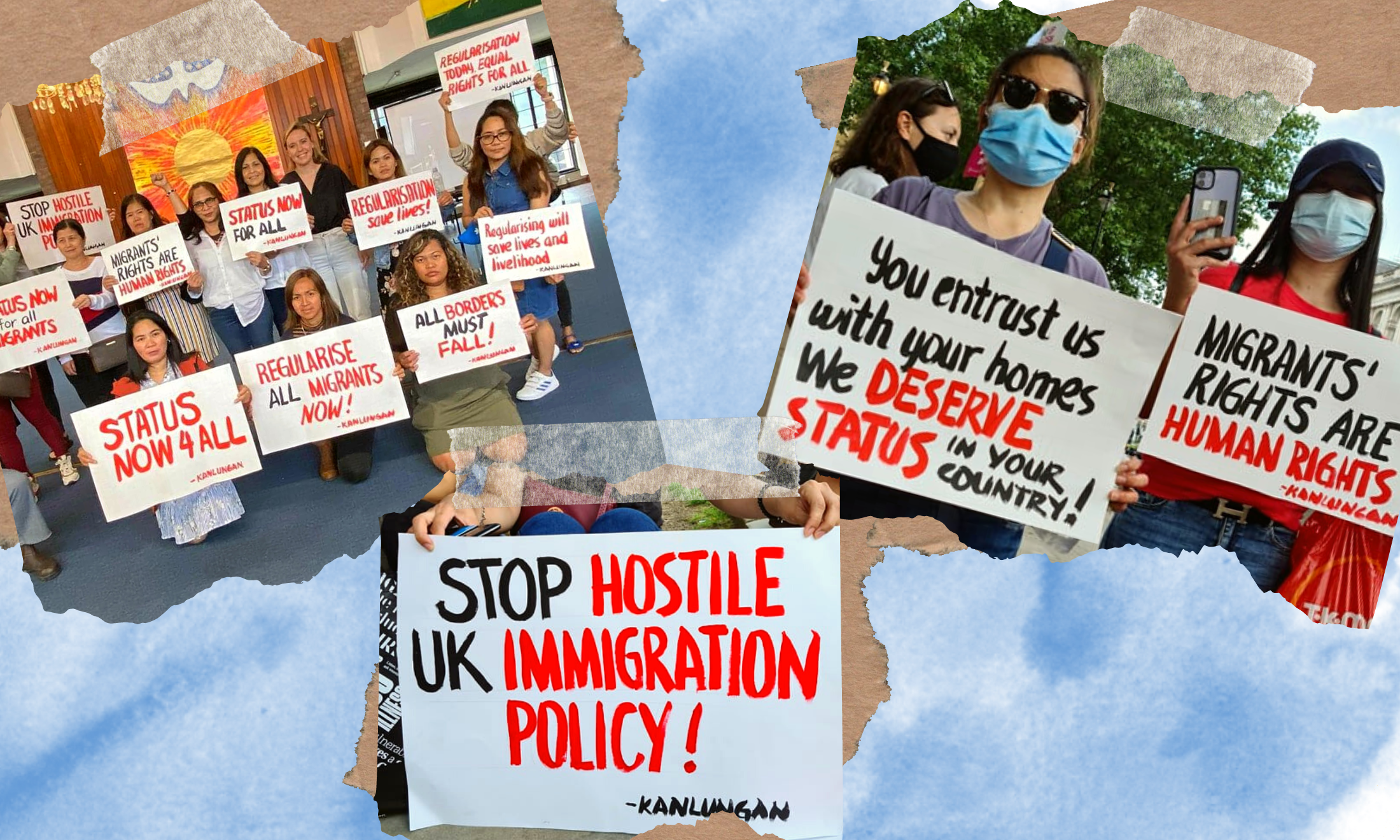
International Worker’s Day marks six years of struggle by garment workers in Bangladesh
Mayisha Begum
01 May 2019
Photography via Flickr/Derek Blackadder depicting a protest after 76 workers died in the Spectrum garment factory collapse, Dhaka, Bangladesh.
For some workers, May Day is seen as just another extended break away from the grind. If your employment arrangement includes paid national holidays, the long weekend might be bookended with downing tools or a joyful out-of-office, and whispered prayers for good weather. However, the origins of May Day, or International Workers’ Day, stem from the revolutionary struggle of workers that resulted in significant improvements to labour conditions that workers in Britain continue to benefit from, namely the eight-hour working day. Workers around the world embrace May Day as a day to acknowledge the ongoing sacrifices of workers who fight against violent retaliation and resistance to their demands for justice.
Indeed, just over 130 years after International Worker’s Day was so named by a coalition of socialist and communist parties, the struggle for labour justice is far from over. Just a week prior to International Worker’s Day, April 24, marks the anniversary of the Rana Plaza factory collapse which took place in Bangladesh in 2013. The incident is widely acknowledged to be one of the worst industrial accidents in the world: 1,138 garment workers were killed and hundreds injured after the 8-storey building containing several garment factories cascaded to the ground. The proximity of the Rana Plaza disaster anniversary to International Worker’s Day feels starkly symbolic of the disturbingly similar reality faced by workers both in the 19th Century, and in 2019.
A groundswell of research and investigation into “fast fashion” suggests that the exploitation of garment workers by brands has intensified. It is evident that brands continue to lower the prices they give to factories to produce their clothes; the 2019 Transparency Index revealed that only nine percent of brands surveyed have a formal process for gathering supplier feedback on brands’ purchasing practices. At the same time, brands are also demanding that clothes be made in shorter and shorter spans of time, on top of penalising factory owners if they fail to comply and delaying payments. Financially squeezing factory owners in this way paves the road to exploitative working conditions. Suppliers are forced to cut costs in order to meet brands’ increasing demands with limited financial support. At the same time, suppliers are expected to meet ethical codes of conducts set by the very same brands. Cost-cutting inevitably results in risky conditions, including subcontracting work to unregulated factories with worse working conditions and lower wages.
“Violence is also prevalent in the garment industry, with some factories hiring thugs to physically assault workers”
Meanwhile, the repression of garment workers seeking better working conditions has also intensified. For example, research conducted by the Workers’ Rights Consortium found that in Bangladesh in December 2018, after garment workers making clothes for brands such as H&M, Mango and Next protested to demand a minimum wage, at least 65 workers were arrested over baseless charges, and as many as 11,600 workers were fired without legal justification. Violence is also prevalent, with some factories hiring thugs to physically assault workers, while the extensive violence of the security forces has resulted in the death of one worker. This case has been described by labour rights activists as “the most extensive repression ever faced by garment workers in Bangladesh”. This sets the scene for an incredibly volatile landscape for workers seeking justice, who are met with indifference from brands as business continues to pour in with little commentary on the treatment of workers, other than a statement online professing to sympathise with garment worker’s “frustrations”.
With brands intensifying worker exploitation and shutting down attempts to improve conditions, it is unsurprising that workers are taking drastic measures are taken to secure justice. When workers who were affected by the Rana Plaza factory collapse failed to receive adequate support from brands and the government six years after the tragedy, survivors underwent a hunger strike, and issued a set of 11 demands to the government. Tragically, last week one of the volunteers involved in the Rana Plaza rescue mission killed himself on the sixth anniversary of the collapse, further indicating the lack of support for survivors. This week, another hunger strike has begun, in response to sexual harassment in a garment factory.
The continued decline in workers’ conditions may come as a surprise, considering the rise in interest and awareness of “ethical” and ”sustainable” fashion globally. The appeal of ethical fashion as a means to support workers is clear. It provides a simple solution to the problem of exploitation which allows consumers to feel as though they are changing the lives of workers abroad, while relieving their own guilt. We are sold the idea that through demanding more ethically produced clothes, we can convince corporations to change their purchasing practices.
“Consumers are too busy ethically consuming their way to justice to show collective solidarity for workers in struggle”
This approach, while well-intentioned, is misguided. Focusing attention on personal purchasing practices promotes an individualistic, neoliberal form of activism, putting the responsibility of change on the consumers instead of the corporations. This allows brands to continue violating workers’ rights with little outrage from consumers, who are too busy ethically consuming their way to justice to show collective solidarity for workers asking for worldwide support for their struggles. Ethical consumption also depoliticises exploitation, limiting our imaginations to the purchase of a Fairtrade T-shirt when we try to conceive of solutions to the deep-rooted, systematic exploitation of workers under capitalism.
A sustainable response to exploitation requires disrupting the focus on individual consumption habits, with the Global North consumer at the top, and re-centring resources around the formation of movements that actively show collective solidarity with workers. Successful campaigns in the garment industry include those in which workers lead and develop a sustained, local movement on the ground, while activists in the Global North simply provide a supporting role, utilising their position to demand change on the side of brands.
Consumers must accept that their saviour-hood will not protect workers from their poor working conditions. Workers are struggling relentlessly on the ground, and our duty is to listen, to learn and show solidarity. Solidarity is not an abstract idea we need to reach for: the far-reaching consequences of unregulated corporate power are alive and well in our workplaces, and the prevalence of neoliberal policies continue to demolish our rights. There is a real danger that “ethical” purchases will distract us from the realities of a global capitalist system which priorities profit over people. This distraction will continue to hit the workers with the least power in the global labour market the hardest.









